Everyday I hear with an intermediate device the 6V6 Buffer. Has a terrible clarity three-dimensional scene,I'm so happy to hear it everyday.My source are an old CD Player Technics CL520A and the USB DAC Mirand Audio 4490.I will use this rotary switch LORLIN 4P3T for selecting 3 inputs working good.
Attachments
Last edited:
Congrats.
Looking nice and well organized with your various sections PCBs on that plank. Big trafo also. What comprises the rest of the audio system and how do you like the pre in it? Planning to encase it in a metal box at a point? Although the 6V6 pre's B+ is not too high, what is the temperature on your KSA1381s? Bcs I don't see mini sinks on them.
Looking nice and well organized with your various sections PCBs on that plank. Big trafo also. What comprises the rest of the audio system and how do you like the pre in it? Planning to encase it in a metal box at a point? Although the 6V6 pre's B+ is not too high, what is the temperature on your KSA1381s? Bcs I don't see mini sinks on them.
Congrats.
Looking nice and well organized with your various sections PCBs on that plank. Big trafo also. What comprises the rest of the audio system and how do you like the pre in it? Planning to encase it in a metal box at a point? Although the 6V6 pre's B+ is not too high, what is the temperature on your KSA1381s? Bcs I don't see mini sinks on them.
My audio system:
DAC: Hifimediy USB DAC 2 with salas as PSU + mod
VOL: LDR volume
PRE: 6v6
AMP: LM1875
SPEAKER: KEF Q65 with XO recap.
After some hours with this pre on my system, I think this preamp has good mid and high and wide sound stage. But the bass which is nice but very limit due to the Zin of LM1875 ~ 6K85 and LM1875 also not famous about its bass. Will diy a new one quickly. But this preamp is a keeper.
And yes, metal box will be next step with wiring and hard soldering. KSA1381s is a bit hot but I can put my finger on it for a long time. Plan to add small metal heat-sink later.
6v6 in line amp .lm1875 in power amp .
It is not technically not ok, I know
My audio system:
DAC: Hifimediy USB DAC 2 with salas as PSU + mod
VOL: LDR volume
PRE: 6v6
AMP: LM1875
SPEAKER: KEF Q65 with XO recap.
After some hours with this pre on my system, I think this preamp has good mid and high and wide sound stage. But the bass which is nice but very limit due to the Zin of LM1875 ~ 6K85 and LM1875 also not famous about its bass. Will diy a new one quickly. But this preamp is a keeper.
And yes, metal box will be next step with wiring and hard soldering. KSA1381s is a bit hot but I can put my finger on it for a long time. Plan to add small metal heat-sink later.
All you describe seem normal. Works correctly.
2.2uF coupling to 6.85k load is not ideal indeed.
180mS time constant would be best i.e. with that capacitor about 36k load.
It is not technically not ok, I know

But no amp left at the moment ...
Something with more drive and power on a good sized PSU to move and control better the KEF floorstander especially in the bass. And a higher Zin of course. You built the cathode follower or the common cathode 6V6 version? I don't see further coupling so it must be the gain version unless a small cap is behind the tubes. In this case keep in mind you got 15dB voltage gain already so don't use more than 15-18dB voltage gain in the amplifier with that rather sensitive KEF and a digital source. If its the buffer version use 28-33dB in the amplifier. Also remember that the common cathode gain version is phase inverting. You can compensate for that by simply reversing the external speaker wires connections at the loudspeakers binding posts.
Something with more drive and power on a good sized PSU to move and control better the KEF floorstander especially in the bass. And a higher Zin of course. You built the cathode follower or the common cathode 6V6 version? I don't see further coupling so it must be the gain version unless a small cap is behind the tubes. In this case keep in mind you got 15dB voltage gain already so don't use more than 15-18dB voltage gain in the amplifier with that rather sensitive KEF and a digital source. If its the buffer version use 28-33dB in the amplifier. Also remember that the common cathode gain version is phase inverting. You can compensate for that by simply reversing the external speaker wires connections at the loudspeakers binding posts.
Yes, my next amp will have high zin since it is JFET input. I built the gain version of the preamp, I limited the max volume to about 1/3 max in the LDR volumn so it wont sound too lould. I already switched the speaker wire + and - in the first test. Now I just let the heater burn in and will wait for a day before next hearing.
Last edited:
Yes, my next amp will have high zin since it is JFET input. I built the gain version of the preamp, I limited the max volume to about 1/3 max in the LDR volumn so it wont sound too lould. I already switched the speaker wire + and - in the first test. Now I just let the heater burn in and will wait for a day before next hearing.
It will make a much better match with the preamp and the speakers. You haven't heard this pre in full potential yet. Is it a Pass DIY amp you have in mind or something else?
It will make a much better match with the preamp and the speakers. You haven't heard this pre in full potential yet. Is it a Pass DIY amp you have in mind or something else?
I personal was not attracted to Pass DIY designs. It is kind of OS Symasui IPS with JFET input and EF2 OPS with a twist: using TO220 lateral mosfet as driver and BJT as output transitor. I think it will combo very well with 6v6 preamp.
Last edited:
Could anyone give an example how we select the perfect working point in a tube, and specifically our circuit Cathode follower version.
What we're looking for?
I found this calculator from this site..
mh-audio.nl - Home
What we're looking for?
I found this calculator from this site..
mh-audio.nl - Home
Attachments
Last edited:
There are different things to weigh in an operating point selection depending on purposes. To have enough input signal swing margin if its line level for instance or to have low dissipation that can lower noise and microphonics too, or to have lower plate load for lower Zout etc. See this old short thread about the overview of the matter for instance: http://www.diyaudio.com/forums/tube...ed-operating-points-small-signal-triodes.html
Everything goes well with 10K ALPS AND rotary switch LORLIN 4P3T for selecting 3 inputs working good for simplicity, no noise at all .The LCD screen from LDR Volume add me some strange noise like mosquito noise.
I have order OLED LCD LED Display to see if make any difference.
1.3 inch IIC I2C 128X64 Blue OLED LCD LED Display Module for Arduino | eBay
I have also order a pot Tocos Kosmos 50K.
1pc COSMOS TOCOS Potentiometer RV24YG 20S 15A503 x2 A50k?x2 A50K 50K 24mm Japan | eBay
I have order OLED LCD LED Display to see if make any difference.
1.3 inch IIC I2C 128X64 Blue OLED LCD LED Display Module for Arduino | eBay
I have also order a pot Tocos Kosmos 50K.
1pc COSMOS TOCOS Potentiometer RV24YG 20S 15A503 x2 A50k?x2 A50K 50K 24mm Japan | eBay
Attachments
Last edited:
Greetings, All
On this date (23rd May) ten years ago (2007) Salas began this "6V6 line preamp" thread with (obviously) post #1. Since that first post "6V6 line preamp" has become an Epic, not only in size, but also in terms of quality of content. It, IMO, exemplifies the best that diyAudio.com has to offer. Many great threads exist on this website but "6V6 line preamp" holds a special place in my heart. Thank you Salas and diyAudio.com. And Happy 10th Anniversary. Much appreciated. -Edward
On this date (23rd May) ten years ago (2007) Salas began this "6V6 line preamp" thread with (obviously) post #1. Since that first post "6V6 line preamp" has become an Epic, not only in size, but also in terms of quality of content. It, IMO, exemplifies the best that diyAudio.com has to offer. Many great threads exist on this website but "6V6 line preamp" holds a special place in my heart. Thank you Salas and diyAudio.com. And Happy 10th Anniversary. Much appreciated. -Edward
*Yes it is top class indeed. Have compared to many.
*I reverse at the speaker end. This one plays better than a 6C45PI with amorphous OPT of a friend. Used double mono regulators, no difference than with a common reg. Uses separate current sources for heaters, has 2 separate windings. Don't know for different heater trafo benefit as in AC heating.
*Thank you for your nice comment.
What about reversing at the input to the 6V6 line amp, will it work ??
- Home
- Amplifiers
- Tubes / Valves
- 6V6 line preamp
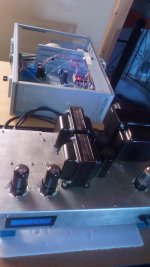
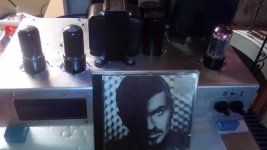
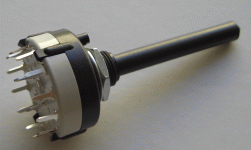
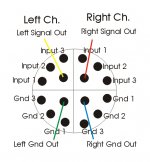
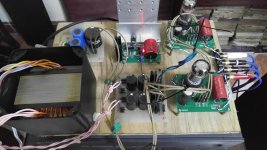
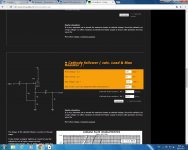
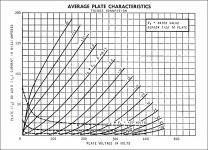
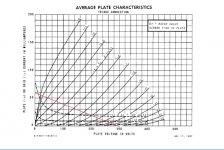
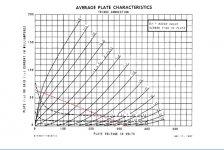
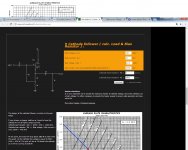
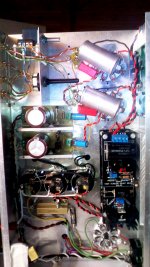
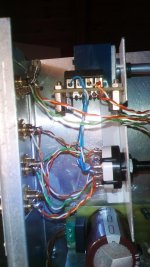
 Thanks and best regards
Thanks and best regards